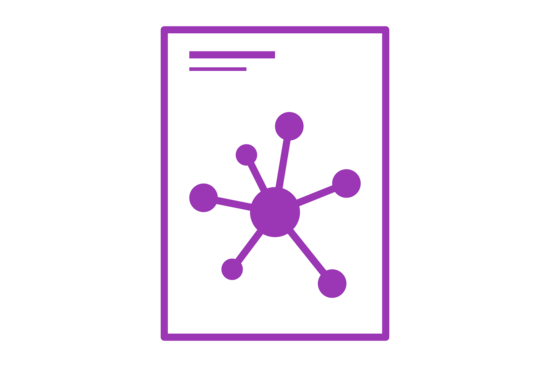
QUALity of Open Source Software (QUALOSS) is a Framework Programme 6 project funded by the European Commission. It is coordinated by CETIC and involves eight partners from 5 European countries, namely Belgium, France, Germany, Spain and The Netherlands.
Domaine
Factsheet
Project team
QualOSS is developing a methodology to assess free and Open Source software (F/OSS) endeavours. In particular, the standard QualOSS assessment method evaluates the robustness (capability to handle problems) and the evolvability (capability to remain viable in the long term) of F/OSS endeavours. These two aspects are very important for making informed decisions before integrating a F/OSS component or a new version of a F/OSS component in products, services or infrastructure. Indeed, organisations should only trust F/OSS endeavours that they consider robust and evolvable; otherwise they
will run the risk of wasting time and effort learning and integrating F/OSS components that will soon become obsolete.
Besides using the QualOSS methodology to develop a smart F/OSS acquisition programme, companies may also use it to monitor their own software development endeavours. For example, it is possible with minimal effort to tailor the standard QualOSS assessment method to evaluate internal proprietary software projects. In particular, the QualOSS platform that uses the QualOSS methodology will perform automated measurements on data repositories from tools often used by F/OSS projects such as CVS, Subversion, GIT, Bugzilla,
and Sourceforge Tracker. But connecting proprietary tools often used in the software industry would definitely be feasible.
Efforts in 2008 primarily focused on solving the problem encountered with the prototype built in 2007. Based on the lessons learned, the QualOSS methodology is now made to be flexible and to impose rigour when conducting assessments. In particular, it is designed to adapt to many F/OSS acquisition situations and to force information recording to guarantee a high degree of traceability in assessment results. This is achieved by splitting the methodological from the assessment methods.
The QualOSS methodology consists of a framework of requirements that assessment methods must satisfy. The standard QualOSS assessment method was built to fulfil these requirements. Furthermore, it addresses the other weaknesses of the prototype. Firstly, it clearly identifies specific questions that an assessment answers. This in turn makes assessment results easier to understand. Secondly, the standard QualOSS assessment method imposes a workflow to better orchestrate an assessment. In consequence, the synchronisation of datasets measured in an assessment is performed a priori. During the latter part of 2008, measures and indicators needed to answer the
clear, specific questions were defined.
In parallel to the R&D effort, an initial set of three industrial case studies was identified. The initial studies aim to verify if the standard QualOSS assessment method can be used, first by AdaCore to assess F/OSS endeavours corresponding to different versions of the GCC backend; second by Océ Software Laboratories to determine whether to integrate the lpr client from yanolc in one of its products or whether to re-implement it from existing OSL internal components; and third by Freecode to identify how to better collaborate with the Asterisk developer community.
In the first half of 2009, the standard QualOSS assessment will be tested on various F/OSS endeavours and also on the initial set of case studies. Subsequently, the measures and indicators will be adjusted until an initial version of the standard QualOSS assessment method is frozen around June 2009. In the second half of 2009, the QualOSS platform will be made more robust. Furthermore, validation on additional case studies is expected in order to check the applicability of the standard QualOSS assessment method to various F/OSS acquisition scenarios. It is also planned to study the effort required to adapt the standard QualOSS assessment method into new, specific QualOSS assessment methods better suited to the F/OSS acquisition scenarios
where the standard method is of limited help.
The main deliverables are the project
, summarising the project achievements and the
.
The other public deliverables are grouped by workpackage
See also on the Cordis website, the QUALOSS project datasheet
Publications
30.11.2007

30.11.2007
Publications scientifiques
Jean-Christophe Deprez and Simon ALEXANDRE, Comparing Assessment Methodologies for Free/Open Source Software : OpenBRR and QSOS, PROFES 2008,...
En savoir plus
01.10.2007

01.10.2007
Publications scientifiques
JC Deprez et al., Defining Software Evolvability from a Free/OpenSource Software Perspective, In Proc. of 2nd Workshop on Software Evolution,...
En savoir plus
01.10.2007

01.10.2007
Communication scientifique
Frédéric Fleurial Monfils and Jean-Christophe Deprez, F/OSS Managed Data Sources Maturity Level : An attempt, In Proc. of 2nd Workshop on Software...
En savoir plus
30.11.2008

30.11.2008
Publications scientifiques
Daniel IzquierdoCortazar, Gregorio Robles, Jesús M.GonzálezBarahona, Jean-Christophe Deprez, Assessing FLOSS Communities : An Experience Report...
En savoir plus